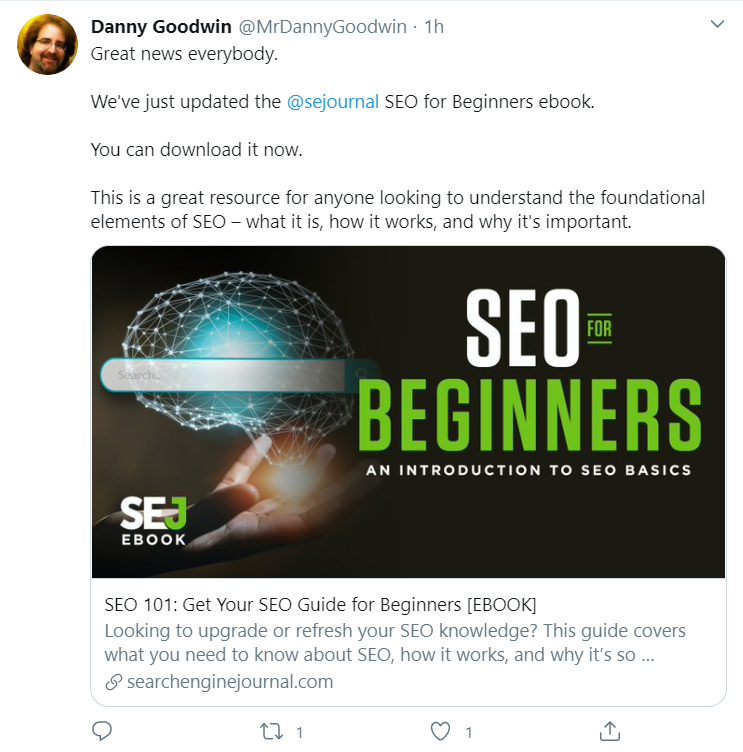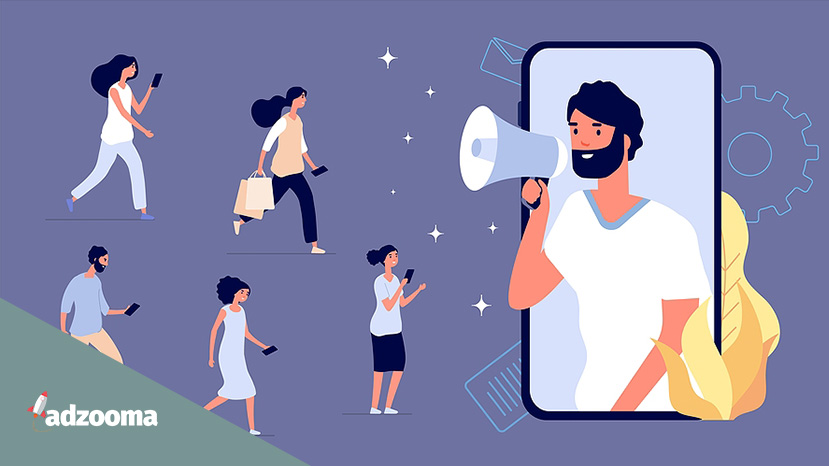Robert Cialdini published his classic bestseller Influence: The Psychology Of Persuasion in 2006. 12 years later and his persuasion principles are just as important to marketing, if not more so as we navigate the coronavirus pandemic.
But, as millions of businesses compete to dominate the advertising space, traditional techniques aren’t as appealing as they used to be to today’s shoppers.
Appealing to a savvy audience doesn’t mean looking for new magical techniques – a good understanding of human psychology is all you need.
Here’s how you can influence people to want your brand, say yes to your services and become loyal customers – all by modernising Cialdini’s work.
1. Reciprocity
The term reciprocity is based on the idea that people feel inclined to give back whether they realise or not. For example, customers are more likely to tip waiters that leave mints with the bill compared to those who don’t.
Advertisers use this principle all the time, from offering free access to their blog all the way to creating insightful Ebooks for their customers on pages called squeeze pages. See Search Engine Journal’s brand new SEO for Beginners, for example:

Their content team didn’t have to create this. But because they’re offering it for free and without expecting anything in return, their readers will be much more likely to interact with the site in future. It’ll also enhance the existing content on their site, drawing people in whenever they want new techniques and news.
It’s one of the quickest, simple and cost-effective ways to influence your customers, all by utilising the knowledge and resources you already have.
For some more depth on this, have a read of our article on squeeze pages.
2. Commitment/Consistency
The principle of commitment suggests that people are much more likely to commit to something that matches their previous behaviour. In other words: if you can get people to connect with your brand once, even on a small scale, it won’t be as difficult to convince them to buy.
A smart way to do this is by offering your website visitors something relatively small and free such as a how-to guide. The small commitment will make it easier for you to follow up with a paid product or service, as they’ve basically already told you they’re interested. That’s all it takes.
In terms of consistency, Ruben Ugarte, Data Strategist at Practico Analysis said that instead of focusing on customer behaviors, companies should focus on changing user habits.
He continued: “For example, a company like Spotify will design playlists to change your mood. Whenever you feel tired or lethargic, you might find yourself reaching for that Spotify playlist. This is a powerful way to ingrain a product/service into the regular lives of people.”
You can see this in action with gym memberships. The reason people never cancel is because they’re committed to the idea of going; they want the vision they have of their gym-going selves in their head to come to fruition.
3. Social Proof
Social proof argues that people are more likely to use or buy something when it’s recommended by other people. Cialdini defined it as people doing what they observe other people doing.
A good example is the Help To Buy ISA which closed to new accounts at midnight on 30 November 2019. Millions of young adults opened an account with as little as £1, all because they’d been influenced by others who had done the same.
Getting people to trust you is all it takes. The aftermath isn’t important – as you can see here:

If you want people to buy into your brand, you just have to show them other people are doing it. Reference case studies and ask people to share their feedback through different channels, just like Adzooma did here. 93% of people say online reviews impact their buying decisions, so it’s extremely important to highlight them where you can.
Even better, tell them how many happy customers you’ve got, share user-generated content on social media and push your positive reviews wherever you can. It all contributes to getting more customers.
You can also use a platform like Trustpilot to get star ratings into your ads, and get 15% off all Trustpilot plans as an Adzooma user.
4. Authority
People are swayed by credibility. If someone is debating between your service and someone else’s, they’re much more likely to go for the one with more experience, qualifications and partnerships.
But, being part of the modern world also means people give more weight to brands that are endorsed by officials, celebrities and influencers. According to data, businesses are making $5.20 for every $1 spent on influencer marketing. So it won’t only bring you a good return, but if someone with a large social following uses your product, it’ll assure potential customers it’s worth the money. It’s social proof x10.
Ellen Degeneres x Samsung is the perfect example:

Samsung said Ellen used their mobile phone organically, which, whether true or not, still makes it appear as though she approved of the brand. Of course, it received an incredible response.
You don’t have to use social proof to this scale, but having suitable social media influencers promote your product can work extremely well. Even if it’s getting them to repost one of your Instagram stories, having their approval goes a long way in making other people believe in you.
5. Liking
It goes without saying that people are much more likely to say yes to people they like compared to people they don’t. But according to Cialdini, a key element of liking is more about having things in common.
Social media marketing is an excellent way for you to show common interests with your customers. Use your brand personality to get on the same level as them, share content you know they’ll enjoy and make your brand seem much more human-centered. Look at Wendy’s for example. They’ve gained over 3.7million followers on Twitter alone for their sarcastic, tongue-in-cheek tone.
But, keep in mind that having common interests is about much more than enjoying the same humour. It’s about showing you’re empathetic and considerate, and especially now, that you’re dealing with the crisis in the right way.
Chris Norris, Managing Editor at SleepStandards echoed this idea, stating that customer service can also make or break your brand.
He said: “Even if you have a product that’s not doing well, having great customer service can turn it around. Customer service data can capture the pulse of your customers’ reactions to your product or service, and the areas of improvement. It can also serve to boost your brand and possibly upsell your other products and services while creating rapport with your customers.”
6. Scarcity
Ever not been able to find a product in your size and wanted it so much more? This is because scarcity increases desire.
Opportunities seem much more valuable when there’s limited availability. If there’s only the front row seats left in a cinema screening, the film must be good. Can’t book in with a certain hairdresser? Damn. They must be the best.
Or, maybe the movie trailer was framed in a way to look more enticing than it actually is and the hairdresser you’ve found only works 3 days a week. Just because something is limited it doesn’t mean it’s better, it just makes you think it is. It’s the way things are marketed that really makes a difference. Look at 3 live PPC ads using scarcity here.
Use this to your advantage in marketing by making people feel like they’re going to miss out. If you’re running social competitions and giveaways, put a short time frame on them and remind people of the prizes until there’s 10 minutes to go. If you’re giving away a free Ebook, say there’s only 100 available. No one will know whether they’re the 20th or 230th download, but a whole lot more people will rush to your page.
Become an influential weapon
These 6 techniques will help you appeal to a wider audience, persuade previous customers to repurchase and get ahead of your competitors. If you want to influence people at the exact time they’re searching for your business, applying behavioural economics to PPC should be next on your list.
You can also look into digital tools to help monitor customer behaviour, using the data to influence people at the right part of the funnel. For Mark Carlson, Chief Strategy Officer at Laughlin Constable, this is a method that works particularly well.
He said: “Using digital tools at our disposal, it’s easier to monitor and influence customer behavior than ever before. We know who the target audiences are, where they consume information, and how they move from one digital property to another.
“Through user testing, we know how to make it easier for them to get what they want. And tracking of online behavior patterns tells us what advice or prodding it will take to get them to say yes – to act on the impulse we’ve put in front of them.”
By using these techniques and finding what works best for you, marketing to your customers through this difficult time will be made much more simple than you think.




